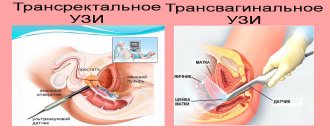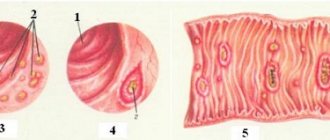Who is at higher risk of becoming infected: men or women?
People of both sexes are susceptible to sexually transmitted infections in equal proportions. But in women, there are nonspecific protective factors that can help prevent pathogens from multiplying. These include:
- acidic vaginal environment;
- normal microflora composition with a predominance of lactobacilli and bifidobacteria;
- natural renewal of the epithelium;
- production of weak concentrated hydrogen peroxide by lactobacilli;
- synthesis of immunoglobulins and other specific components of immune defense.
But the risk of infection increases several times if the vaginal biocenosis changes, dysbiosis and thrush develop. The chance of infection increases with hormonal changes, pregnancy, or before or during menstruation.
In men, the urethral mucosa is not suitable for the proliferation of most microorganisms. The risk of their penetration through the ascending route is lower than that of infecting a woman. After sexual intercourse there is a desire to urinate. This is an additional protective factor; urine washes out bacteria from the urethra that have not yet had time to attach to the tissues.
But the source of infection is often men who offer sex without a condom. Trichomoniasis, chlamydia, HPV have a hidden course. External manifestations do not always appear after the incubation period. But it is possible to infect a partner.
How to avoid contracting HIV infection through sexual intercourse
The situations in which you can become infected from a person with AIDS are varied. But the largest percentage of HIV infections occurs through sexual contact.
What is the percentage of chance of contracting the virus through unprotected contact? The answer to this question depends on the type of intimate act:
- During oral sex, the probability of contracting HIV from a partner for women is 1 in 2500 or 0.04%; for men in this case there is no risk. In the gastrointestinal tract, the immunodeficiency virus is inactivated when interacting with hydrochloric acid, so the risk for women is minimal, it depends only on the presence of damage to the mucous membrane of the oral cavity and pharynx.
- With anal contact, the chance of infection is higher, since the rectal mucosa is much more susceptible to microcracks and injuries.
- With vaginal contact, the likelihood of contracting HIV is maximum for both partners.
Does a condom protect against HIV and AIDS?
The human immunodeficiency virus is a deadly, incurable infection; a condom protects against HIV if the rules of use are followed.
In a sick person, it is present in the blood, in small quantities - in saliva, sweat, in women - in vaginal secretions, and in men - in sperm. During sexual intercourse without a condom, the likelihood of infection is high; women are more often infected from men, because the concentration of the virus is higher in semen. To become infected the first time, the patient must have a high concentration of the virus in his blood. The risk increases if a woman has acute colpitis or during anal sex.
Whether it is possible to become infected with HIV through an intact condom depends on the storage conditions of the condom. Latex is sensitive to high temperatures, so condoms should not be stored in a sunny place. When buying a product in a store, you cannot be sure that storage standards are met.
Latex has a porous structure, and the pore size is much smaller than that of a viral particle. But for transmission it is necessary that liquid secretion from the vagina is saturated through the condom or sperm penetrates the other way. Therefore, you can be sure that HIV is not transmitted through a condom.
AIDS is the terminal stage of HIV infection. This disease is accompanied by the addition of other infectious complications, the development of fungal infections, and tumors. The amount of virus in the blood is maximum, but a condom protects against AIDS if it does not break during sex.
AIDS is not transmitted through a condom; studies show that in some married couples, where one of the partners is sick with HIV, the percentage of infection during regular sexual intercourse using barrier-free contraception is not always 100%. The virus must be transmitted in large quantities, and the body must be susceptible.
If a condom breaks, several conditions are necessary for HIV infection:
- high viral load;
- the disease is not controlled by antiretroviral drugs;
- A woman has acute vaginitis.
To avoid getting sick, infection is prevented. The woman must go to the toilet to urinate. The genitals are treated with soap and douched with antiseptics. Infection control is done after 6 months. If the HIV test result is negative, you can rest assured.
New data on condom effectiveness
7 years have passed since the publication of the sensational report of four US government agencies (US Agency for International Development, Food and Drug Administration, Center for Disease Control, National Institutes of Health) “Scientific Evidence of the Effectiveness of Condom Use in Preventing STDs.” During this period, there was A lot of research has been conducted on this problem. From them, several short conclusions can be drawn, both happy and sad.
- Compared with the 2000 working group report, there is evidence that condoms are not fully effective against HIV infection
- Data on the full effectiveness of condoms for gonococcal infection are not confirmed
- Just as the report does not confirm the full effectiveness of condoms in protecting against chlamydial infection
- But there have been reports of the effectiveness of male condoms in preventing infection with genital herpes and human papillomavirus infection in women.
- The risk of infection when using a condom during anal sex is higher than during vaginal sex
- There is no evidence that condoms are fully effective in preventing genital mycoplasma infections
- The choice of condom does not determine its effectiveness
Now in more detail
The effectiveness of condoms in HIV infection.
By Karen R. Davis and Susan C. Weller (1999) report that the effectiveness of the condom in preventing HIV transmission is estimated to be approximately 87% (range 60% to 96%). Weller S, Davis K. (Cochrane Database Syst Rev. 2002) cite data that the constant use of condoms during heterosexual contacts reduces HIV infection by only 80%.
The effectiveness of condoms for gonococcal and chlamydial infections
Lee Warner, Daniel R. Newman (2004) with a known source of infection provide data that with constant use of a condom, infection with gonorrhea and chlamydia occurs in 30.3%, with a non-constant use in 42.7%, with an unknown source of infection in 23.8% and 25.2%, respectively. The same authors (2007) report that in 16.2% of infections with gonorrhea and chlamydia occur without such reasons as late putting on of a condom, rupture of the condom, early removal of the condom or its slippage. LM Niccolai, A Rowhani-Rahbar, H Jenkins, S Green and DW Dunne (2005) provides data that infection with chlamydial infection with a known source of infection with constant use of a condom occurs in 13.3%, with inconsistent use in 34.4%. With an unknown source of infection, infection occurs in 10.3% and 8.7% of cases, respectively .Richard A. Crosby, PhD, Ralph J. DiClemente (2003) found among adolescent girls reporting consistent (100%) condom use, 17.8% tested positive for chlamydia, gonorrhea and trichomoniasis versus 30.0% positive tests for these infections in girls who reported inconsistent condom use by their sexual partners. Hocking J, Fairley CK. (2006) reported that with consistent condom use, chlamydial infection during anal sex occurred in 8.6% of homosexual men versus 6.8% of heterosexual men.
The effectiveness of condoms against human papillomavirus infection
Rachel L. Winer, Ph.D., James P. Hughes, (2006) report that infection of women with human papillomavirus infection with constant use of condoms by their partners occurred in 37.8%, and in women whose sexual partners did not use a condom in 89.3%. It is interesting to note that consistent use of condoms by sexual partners of women with CIN 1 for 2 years increased the percentage of CIN regression. CIN regression in the group using a condom was 53% versus 35% compared with women whose sexual partners did not use a condom (Cornelis JA Hogewoning Maaike CG Bleeker 2000).
Effectiveness of condoms for genital herpes
Anna Wald, MD,MPH; Andria GM Langenberg, MD (2001) reported that in 25% of cases, the use of male condoms prevented genital herpes infection in women, but not men. In a more recent study (2005), the same authors reported a lower risk of genital herpes infection in groups consistently using a condom than in groups where it was used inconsistently.
Efficacy of condoms against genital mycoplasma infection
Pingmin W, Yuepu P, Jiwen Z. (2005) report the detection of genital mycoplasmas (Ureaplasma urealyticum, Mycoplasma hominis, Mycoplasma genitalium) in 16.67% of prostitutes who constantly use the male condom versus 77.78% who never use it and 34.72% who use it irregularly .
The choice of condom does not affect its effectiveness
Steiner MJ, Hylton-Kong T, Figueroa JP, Hobbs MM, Behets F (2006) found that infection with chlamydia, gonococcal infection and trichomoniasis among a group of men using selectively popular brands of condoms was 21%, which was not significant compared with the group men who used any “standard” condoms (17% of infection).
How effective is condom protection against chlamydia?
Chlamydia is one of the sexually transmitted infections. It is one of the most common STIs, the number of cases is 2-3 times higher than with gonorrhea, but infection without using a condom does not always occur the first time. Studies show that chlamydia penetrates the genitourinary tract in 1 out of 4 cases.
The risk of transmitting chlamydia through sex with a condom is much lower than that of HIV. The cell is larger than the virus, so it will not be able to overcome the latex barrier. Chlamydia is often found inside the host's cells, which also makes transmission impossible.
Can you get HIV from a condom?
Using a condom does not guarantee 100% protection against HIV and genital infections during sexual intercourse, but it is the only way to reduce the likelihood of infection to 2-3%.
Can you get HIV from a condom? Yes, when the contraceptive “fails” (for example, it expires). The indicated 2-3% includes cases where infection occurred during foreplay or after sexual intercourse.
Some manufacturers resort to tricks and indicate “extra strong” on the contraceptive packaging. Thick latex can be used to make them, but the thickness of the material does not affect the reliability of the condom.
Sometimes the packaging says “with spermicide”; the lubricant of such condoms contains the substance nanoxyl-9. This will not help at all against HIV; on the contrary, it has an irritating effect on the skin, causing microdamage.
Does a condom protect against herpes?
Herpes is a viral disease. The genital form of infection is caused by two types of virus. There is a chance of contracting herpes, as well as HIV, with a condom. Before sex, you need to pay attention to the condition of your partner's genitals. Herpetic infection in the acute phase is manifested by characteristic rashes. Each of the elements of the blistering rash is very contagious; they contain a large number of viruses.
Bubbles can be located not only on the genitals, but also on the pubis, perineum, and inner thighs. If you have sex with a condom, there is protection from herpes, which is found in the vagina, but burst blisters on the skin can cause infection. The risk increases with microdamage to the skin that occurs from scratching or shaving.
The breaking of a condom should be scary, because in this case, whether it is possible to become infected with HIV and hepatitis depends only on the patient’s viral load. Preventative measures for a ruptured condom are similar.
Doctors' opinions on the use of condoms to protect against HIV
Almost all HIV experts praise the effectiveness of condoms in protecting against infection. The head of the Volgograd Regional Center for the Prevention and Control of AIDS, Oleg Kozyrev, explains that the virus seems to float in body fluids and is unable to leak anywhere on its own outside the fluid. The condom does not allow fluid to pass through and therefore does not allow HIV to pass through. According to him, there is no one hundred percent guarantee only because the condom sometimes breaks or slips off.
The Chief Physician of the Transbaikal Regional AIDS Center, Elena Mirgorod, shares the same opinion. She says that with modern production technologies, a condom becomes a reliable protection against HIV, but still advises adhering to safer sexual practices.
Alesya Lastochkina, an assistant at the department of the Gomel State Medical University, says that the experience of combating HIV in African and Asian countries proves, first of all, the need to abstain from sexual relations before marriage and fidelity to one partner in marriage, and not just the use of condoms. Thus, in Botswana and Thailand they did not achieve significant success by promoting and distributing only condoms everywhere. But in Uganda they tried, first of all, to influence the sexual behavior of the country's residents. As a result, the incidence of AIDS there has been reduced. Alesya Lastochkina also compares the reliability of condoms with airplanes. She asks if the latter were only 80–85% reliable, would anyone fly them at all?
Use a condom every time you have sex. If you don't know if your partner has HIV, change the condom every time you have anal or vaginal intercourse. Women can use the female condom.
Mayo Clinic
Does a condom protect against syphilis?
Syphilis is caused by a spirochete bacterium large enough to not penetrate the wall of the condom. This is a reliable method that protects against infection if the patient does not have rashes in other places.
Syphilis can mimic a large number of skin diseases. The primary element is a syphilitic ulcer, which occurs at the site of entry of the pathogen into the body and is highly contagious. It is impossible to become infected with a condom if the painless ulcer is located on the penis, vagina, or cervix. But if it appears on the pubic skin, then direct skin-to-skin contact will not protect against infection.
Attention! Syphilitic ulcers can be located in the mouth of the sick person. Therefore, transmission of pathogens can occur through oral sex or kissing.
Ulcers can be located on the palms and fingers, so infection occurs already during foreplay. Hygiene procedures after sex will not protect against infection.
What is the frequency of HIV infection through different contacts?
The chance of contracting HIV through protected contact is low, regardless of the method of sexual intercourse - vaginal, oral or anal.
Following basic rules when using a condom will help you maintain your health and prevent infection.
During oral sex, the risk of HIV infection for the “receiving” partner is no more than 0.04%. This is due to the fact that sperm entering the gastrointestinal tract instantly dissolves. Reported cases are associated with the fact that there were sores or bleeding inflammations in the partner’s mouth, through which the virus entered the blood.
It has been proven that the likelihood of HIV infection is lower for an active partner, regardless of the method of sex - vaginal or anal. For a person who is active during sexual intercourse, the risk of contracting the virus is reduced by 86%. However, this does not completely negate the fact that even active partners can become infected.
Does a condom protect against trichomoniasis?
The causative agent of trichomoniasis is a single-celled microorganism. It is transmitted sexually from person to person and is unstable in the external environment. Trichomonas is killed by drying, treatment with antiseptics or ultraviolet light. The size of Trichomonas is large. Therefore, trichomoniasis and other sexually transmitted diseases are not transmitted through a condom.
Even if the condom is torn, there is a chance of being saved from infection. To do this, it is necessary to take emergency measures - toilet the genitals, douching with an antiseptic.
Other diseases through a condom
Diseases transmitted through an intact condom are very rare. Most STIs are caused by bacteria, and a condom is reliable protection against them. It is also impossible to become infected with the following pathologies:
- thrush, or candidiasis;
- Gardnerella vaginalis;
- viral hepatitis.
The hepatitis virus is a dangerous infection that is transmitted during sex and through blood. It affects the liver and gradually leads to irreversible changes - cirrhosis. In some cases, liver cancer develops under the influence of the virus.
Whether a condom protects against HPV also depends on the clinical manifestations of the viral infection. There are more than 100 types of the virus, some of which cause cervical cancer in women. There are types that lead to proliferative changes on the skin and the appearance of warts.
What infections does a condom not protect against?
HPV is transmitted through a condom if the patient has genital warts in the groin area or perineum.
During sex, they may become damaged and begin to bleed. Condyloma cells contain a large number of viruses that can penetrate to a sexual partner. With a good level of immunity, the risk of infection is low. In other cases, after some time, similar rashes may appear on the skin. To reduce the likelihood of infection of sexual partners, it is necessary to remove condylomas in a timely manner and undergo antiviral treatment. Surgery alone will not lead to recovery.
During sex, you can become infected not only with a bacterial or viral infection. Pubic lice are common among people. They live in the hair on the genitals and are transmitted during close contact; a condom will not protect against them.
Rules of use and precautions
In order not to test for yourself whether it is possible to become infected with AIDS through a whole condom, you must follow the rules of storage and use:
- buy condoms at a pharmacy where there are conditions for storing them at low temperatures;
- store in a place protected from the sun and heat;
- check the integrity of the packaging before use;
- after use, dispose of out of the reach of children;
- Use a new condom for each sexual intercourse.
Group sex should be avoided; a man can infect several women at the same time, even when using a condom, if one of them has a sexually transmitted disease.
The size of the genital organs varies among men, so it is necessary to use a properly sized condom. Too large will slip off during sex and will not protect against infection. Sometimes slippage occurs at the moment of ejaculation; the contraceptive remains in the woman’s genital tract, which greatly increases the risk of infection.
A condom that is too small has limited stretching and can break during sex, which will reduce all protection to a minimum.
Latex condoms are one of the reliable ways to protect against sexually transmitted infections. They are available for free sale; charities fighting AIDS and other infections can freely distribute them. But this method is not suitable for everyone. Some men and women with latex allergies must find another form of contraception.
Using condoms correctly
It is important to use condoms correctly because improper use can damage the condom during sex. This significantly reduces the effectiveness of the condom, allowing HIV to enter the body.
To minimize the risk of condom damage and increase the effectiveness of condom use, you must:
- choose condoms of the appropriate size;
- store condoms at room temperature and regularly replace condoms kept in a wallet or pocket;
- do not use expired condoms;
- make sure that the packaging is not damaged and open the packaging carefully, without using sharp objects;
- use a new condom every time you have sexual intercourse;
- use condoms during the entire duration of sexual intercourse;
- put on and remove the condom according to the instructions.
If used correctly, the risk of contracting HIV with a condom is reduced to zero. Therefore, when using a condom, follow the instructions:
- Carefully open the package so that the condom does not break;
- Make sure the condom is positioned correctly on the penis;
- Pull out the foreskin of the penis;
- Squeeze the tip of the condom (to remove air and leave room for sperm to collect) and pull it over the erect penis all the way to the base;
- apply sufficient lubricant (only water-based or silicone-based lubricants should be used with latex condoms; saliva should not be used as lubricant);
- immediately after sex, hold the condom while removing the penis from the vagina or anus;
- carefully remove the condom from the penis only when there is no contact with the partner’s body, and make sure that the sperm does not spill;
- Dispose of the condom safely.
The correct way to use an internal or female condom is:
- Carefully open the package so that the condom does not break;
- Apply lubricant to the outside of the closed end;
- Squeeze the sides of the inner ring at the closed end of the condom and insert into the vagina or anus;
- Insert the inner ring into the vagina or anus until it stops, while the outer ring should be on the outside;
- If during sex the outer ring is pushed into the vagina or anus, stop and push it back into place;
- Make sure that the penis fits into the condom and does not pass between the condom and the wall of the vagina or rectum;
- Immediately after sex, gently twist and pull the end of the condom to remove it, being careful not to spill semen into the vagina or rectum;
- Dispose of the condom safely.











